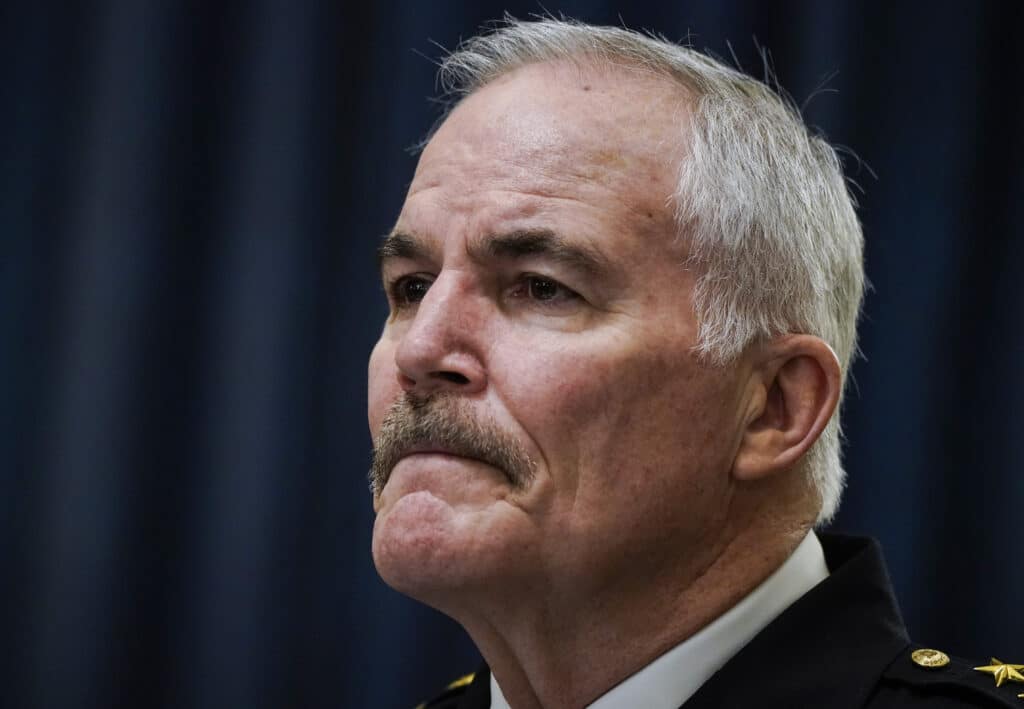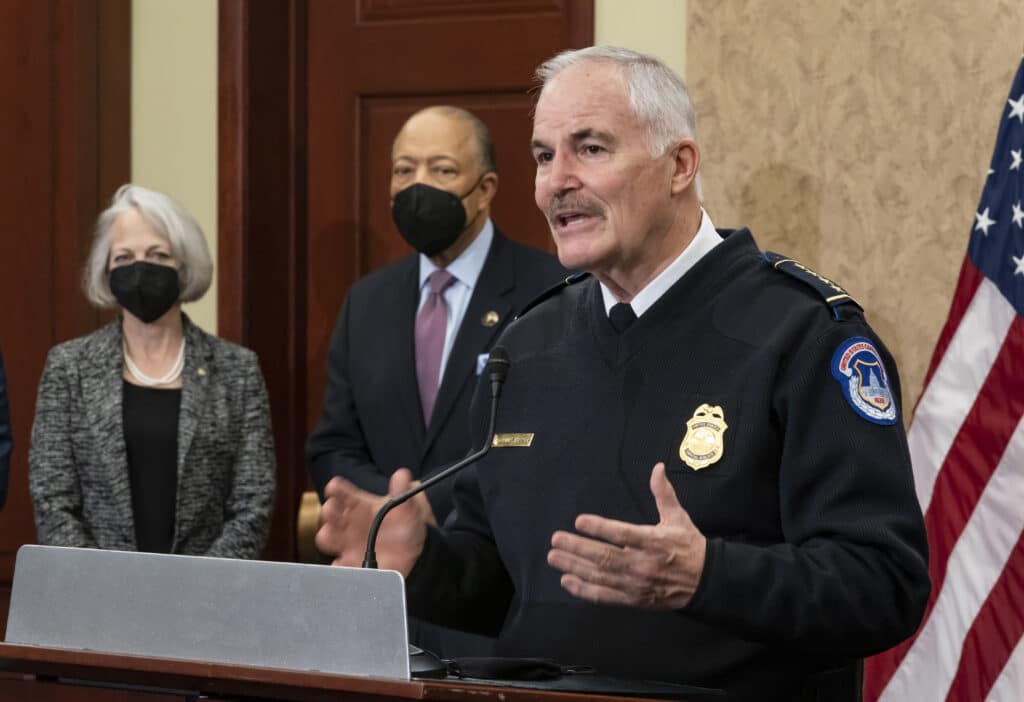In anticipation of a repeat of last year’s Jan. 6 riot at the U.S. Capitol, the Capitol Police have made some changes in order to be better prepared. Chief J. Thomas Manger testified to a Senate committee about the progress. The Associated Press has the story:
Law enforcement better prepared for threats to members of Congress
WASHINGTON (AP) — A year after the Jan. 6 Capitol attack, the new chief of the U.S. Capitol Police said Wednesday he is making progress in resolving “critical deficiencies” despite major staffing shortages and thousands of new threats to members of Congress.
“We’re going to get tested again” and will be prepared, declared Chief J. Thomas Manger.
Changes include improving the agency’s ability to gather, analyze and share intelligence with other federal and state law enforcement forces, Manger said. That failing contributed to a lack of defensive forces at the violent Capitol insurrection as rioters fought past outmanned police, leaving more than 100 of them injured.
Manger is dealing with recommendations from an internal watchdog to move the agency from a traditional police department to a protective force.

“January 6 exposed critical deficiencies with operational planning, intelligence, staffing and equipment,” Manger said in testimony. “I recognize those issues have to be addressed, and that is what we are doing.”
Manger, who was installed as the new leader shortly after the attack, said the force today is stronger and better equipped to handle an attack against the Capitol or lawmakers than it was a year ago.
The force is also working toward more state-of-the-art training for its 1,800 sworn police officers and nearly 400 civilian employees after a report from U.S. Capitol Police Inspector General documented that more than 75% of officers on Jan. 6, 2021, were forced to protect the Capitol in their regular uniforms, often facing off with rioters who were better equipped for a fight.
But even with new equipment and intelligence-sharing capabilities, the biggest challenge the force faces is staffing. It is now 450 officers short of the agency’s needs, Manger said. More than 150 officers have either retired or resigned over the past year.
In the short term, the chief is looking to add more transfers from other law enforcement agencies and to contract with private security officers for locations that don’t need armed officers. Over the longer term, he wants to hire 280 police officers per year over the next three years.
“That will get us ahead of attrition, and my hope is that will get us to where we need to be in terms of staffing,” Manger said.
Lawmakers are also concerned about the rise in threats in their home districts and states.
“Many people in this very room, committee members have experienced them. Over 9,000 threats in 2021 alone,” Sen. Amy Klobuchar, chairwoman of the Senate committee, said Wednesday.
Manger said the Capitol Police are looking to improve coordination with local law enforcement to better secure lawmakers’ offices and homes.
“The biggest challenge I think we have is keeping up with the number of threats,” Manger said. “We’ve doubled the number of officers that investigate these threats. … If they continue to go up the way they have, clearly we’re going to need additional officers to assign to this responsibility.”
The department is also planning on hiring a new deputy chief to take on the role of intelligence.
Manger said that intelligence and leadership failures within the Capitol Police contributed to the breaching a year ago. He said one of the changes put into place is that with a few phone calls, he now can get substantially more police officers into place to protect the Capitol complex.
“We’re going to get tested again, but we have put things into place to make sure that we will not be impacted by intelligence failures or failure to plan ahead, failure to imagine or failure to have enough people here,” Manger said. “I’m confident that when we’re tested again, we’re going to be fine.”
By FARNOUSH AMIRI and KEVIN FREKING







